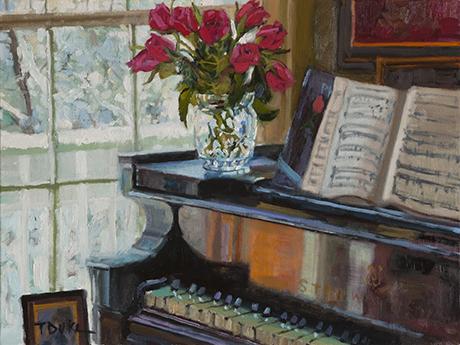The Steinway Series, and Other Mementos
On display February 22 – April 12, 2017
Paintings by Teresa Duke
Born in Washington, D.C. in 1962, Ms. Duke spent much of her childhood painting alongside her mother, a talented watercolorist.
She pursued her Master of Fine Arts degree at George Washington University under the tutelage of William Woodward and, after graduating, spent several years living and working in scenic Rappahannock County Virginia.
In 1992, Ms. Duke moved to Northern New Mexico in order to paint the brilliant light and saturated colors of the high desert. While there she studied with the painter Wolf Kahn at the Santa Fe Institute of Art. Since returning to Virginia in 1994, Ms. Duke has continued to work as an artist and teaches art to young people at Wakefield School, in The Plains, Virginia.
Ms. Duke has always loved the work of modern realists in still life, landscape, and portraiture. Like them, she is fascinated with light, particularly how it creates color and form, its transience, and its ability to transform the average into the sublime. “The act of chasing light in creating both plein air landscapes and still lifes is adrenalin-packed, highly focused, and wildly exciting. It’s the type of painting that keeps me hooked three out of four seasons of the year.”
The rest of her painting time is balanced by studio work, where the pace is slower and the focus is on carefully composed still life paintings and portraits that are more personal and reflective in nature. Ms. Duke works in oils because of their lushness and responsiveness.
Her approach to a painting is known as alla prima, a method developed by the mid-19th century impressionists that calls for a quick response to the subject. Painting alla prima is an immediate, but very calculated approach where the artist thinks about color, temperature and value while laying down abstract shapes calculated to gel into a composition that does credit to the subject.
Most of her paintings are done from life. “Working directly from the still life, model, or landscape allows for an emotional exchange between artist and subject that I find essential. Knowing that this exchange or connection usually has a limited life span—the model grows weary, the fruit spoils, or darkness falls—challenges me to be as clear, direct, and robust as I possibly can.”


